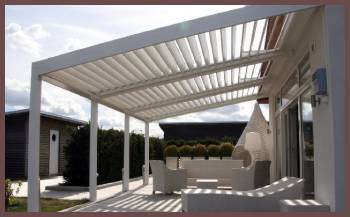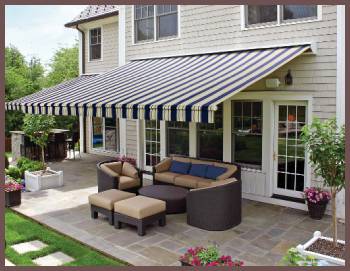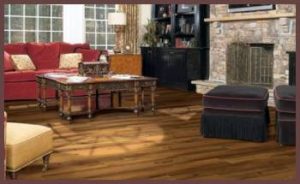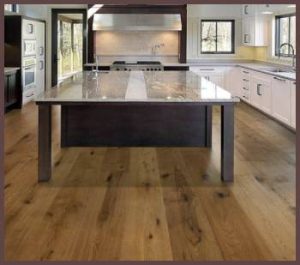When the sun is shining, and the weather’s just right, there’s no better way to enjoy the great outdoors than in the comfort of your backyard. But how can you fully take advantage of the beautiful weather without being burnt to a crisp? That’s where pergolas and awnings come into play. These two popular outdoor additions are perfect for creating shade, enhancing comfort, and adding style to your outdoor space.
Let’s dive into the world of pergolas and awnings, highlighting their pros and cons, and answering some frequently asked questions.
A Brief Comparison Table
| Pergola | Awning | |
| Aesthetic Appeal | High (especially with climbing plants) | Moderate (functional design) |
| Shade Coverage | Partial to moderate (varies with plant coverage) | Full (with retractable options) |
| Versatility | High (multiple uses) | Moderate (mainly for shade) |
| Durability | High (especially with robust materials) | Moderate to high (susceptible to severe weather conditions) |
| Cost | Typically higher (especially for custom designs) | Typically lower |
| Maintenance | Low to moderate (depending on plant coverage) | Moderate (needs to be retracted in harsh weather) |
| Property Value | Likely to increase | Likely to have less impact |
| Weather Resistance | Moderate (open structure) | High (provides full coverage) |

The Majestic Pergola: An Overview
A pergola is an outdoor structure typically consisting of vertical posts supporting an open lattice. Climbing plants often weave themselves through the lattice, offering an aesthetic element and additional shade. Pergolas are typically standalone structures but can also be attached to a building.
The Pros of a Pergola
Firstly, pergolas are visually appealing. They give your outdoor space a touch of elegance and a unique character that’s hard to replicate. A pergola can be a stunning focal point in your garden, especially when covered with blooming vines.
Secondly, pergolas offer excellent versatility. They can serve various functions such as a garden centerpiece, a shaded area for outdoor dining, or a cozy nook for lounging with a book.
Thirdly, pergolas can increase the value of your property. Their appealing design and functionality make them an attractive feature for potential homebuyers.
Read More: Differences Between Daltile Arctic White And Bright White
The Cons of a Pergola
The main downside to a pergola is its cost. Building a pergola can be expensive, particularly if you opt for a custom design or high-quality materials.
Additionally, while pergolas provide shade, their coverage is often not complete, leaving some areas exposed to sun and rain.
The Practical Awning: A Closer Look

An awning is a type of secondary covering attached to the exterior wall of a building. It’s typically composed of canvas or acrylic cloth that is stretched over a light structure of aluminum or steel.
The Pros of an Awning
The primary benefit of awnings is their effective protection from the elements. Whether it’s a scorching summer day or a sudden downpour, an awning can provide full coverage.
Secondly, awnings can be retractable, offering the flexibility to control how much shade you want. When the weather is cooler or overcast, you can retract the awning to allow more light in.
Thirdly, awnings can contribute to energy efficiency by reducing solar heat gain, which can help cut cooling costs during summer months.
The Cons of an Awning
One of the significant drawbacks of awnings is their durability. Awnings, especially retractable ones, can be susceptible to damage from strong winds or heavy snowfall.
Also, while they are practical, awnings might not provide the same aesthetic appeal that a pergola can offer.
Read More: Is Guardian Furnace Worth It?
Frequently Asked Questions (FAQs)
The choice between a pergola and an awning depends on your specific needs and preferences. If aesthetics and versatility are your top priorities, a pergola might be a better choice. On the other hand, if you’re looking for better protection from the elements and increased energy efficiency, an awning could be more suitable.
The primary disadvantages of awnings include potential damage from harsh weather conditions, a limited aesthetic appeal compared to pergolas, and maintenance requirements, such as cleaning and retracting them in severe weather.
A pergola serves several purposes. It creates a defined space for outdoor activities, offers partial shade while still letting natural light in, and serves as an attractive garden feature. It’s also a popular structure for supporting climbing plants, providing an enhanced aesthetic appeal.
Pergolas have many advantages, including their aesthetic appeal, versatility, and ability to increase property value. They create a unique outdoor space that’s perfect for dining, entertaining, or simply relaxing. With their open design, they provide a good balance of shade and sunlight.
Yes, awnings are designed to provide protection from light to moderate rain. However, they should be retracted in heavy rain or stormy conditions to prevent damage.
While awnings can handle light to moderate rain, heavy rain can put excessive pressure on the fabric and structure, potentially causing damage. Therefore, it’s recommended to retract your awning during heavy rainfall or storms.
Conclusion
The choice between a pergola and an awning often boils down to your specific needs, preferences, and budget. If you’re leaning towards a structure that brings an architectural appeal and boosts property value, a pergola may be the way to go. But if you’re after practical weather protection and energy efficiency, an awning could be a better fit.
In the end, both options provide their unique benefits to your outdoor space, enhancing comfort and enjoyment. With the right choice, you can enjoy those sunny days and beautiful evenings to the fullest, right in the comfort of your backyard.



